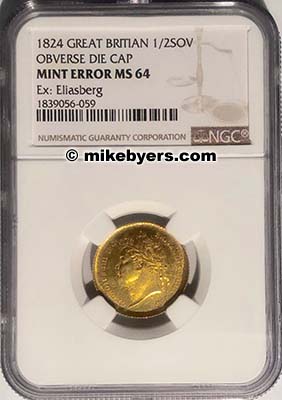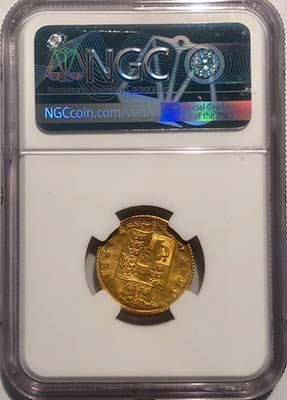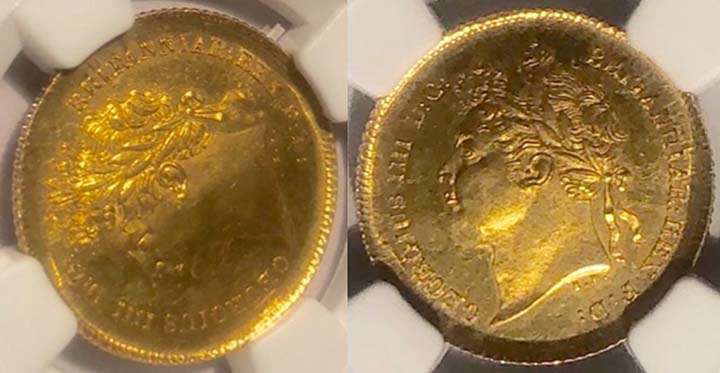Glossary
CategoriesBonded CoinsBroadstrikes Brockages Counterbrockages Die Adjustment Strikes Die Caps Die Trials Double Denomination Double/Multiple Strikes Dual Countries Dual Mint Marks Essay Trial Strikes Experimental Blanks Experimental Strikes Experimental Surface Feeder Finger Strikes Foreign Coins Struck on U.S. Planchets Galvanos Gold Die Trials Gold Errors Gold Off-Metals Hub Trials Indents Intentional Errors Martha Washington Test Pieces Mated Pairs Mules Multiple Errors Off-Centers Off-Metals Overstrikes Pattern Die Trials Pattern Errors Pattern Mules Plaster Models Platinum Errors Proof Errors SMS Mint Errors Specimens Spectacular Errors Struck Scrap Struck Thru Transitional Errors Two-Headed Coins Two-Tailed Coins Uncancelled Dies Uniface Die Trials Unique Coins |
  Die CapsPictured above is the only known obverse die cap struck in gold from any country. It was certified and authenticated by NGC. It is an English Half Sovereign dated 1824 of King George IV. This happens to be an extremely rare date in the English Half Sovereign series and is also in gem mint state condition. After being struck, this gold coin adhered to the obverse die and became an obverse die cap. It subsequently struck several planchets, creating brockages on the obverse of each coin. The reverse design of this die cap expanded with each strike. As with any obverse die cap, the shape resembles a thimble or bottle cap.  |



